#los miserables 1971
Text
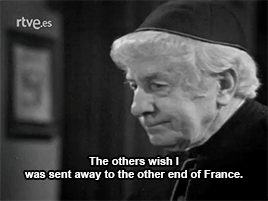
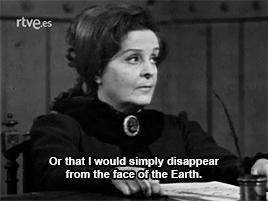


LES MIS LETTERS IN ADAPTATION - A Restriction, LM 1.1.11 (Los Miserables 1971)
The fact is that he displeased them. Among other strange things, it is said that he chanced to remark one evening, when he found himself at the house of one of his most notable colleagues: “What beautiful clocks! What beautiful carpets! What beautiful liveries! They must be a great trouble. I would not have all those superfluities, crying incessantly in my ears: ‘There are people who are hungry! There are people who are cold! There are poor people! There are poor people!’”
Let us remark, by the way, that the hatred of luxury is not an intelligent hatred. This hatred would involve the hatred of the arts. Nevertheless, in churchmen, luxury is wrong, except in connection with representations and ceremonies. It seems to reveal habits which have very little that is charitable about them. An opulent priest is a contradiction. The priest must keep close to the poor. Now, can one come in contact incessantly night and day with all this distress, all these misfortunes, and this poverty, without having about one’s own person a little of that misery, like the dust of labor? Is it possible to imagine a man near a brazier who is not warm? Can one imagine a workman who is working near a furnace, and who has neither a singed hair, nor blackened nails, nor a drop of sweat, nor a speck of ashes on his face? The first proof of charity in the priest, in the bishop especially, is poverty.
This is, no doubt, what the Bishop of D—— thought.
#Les Mis#Les Miserables#Les Mis Letters#Les Mis Letters in Adaptation#Los Mis 1971#Los Miserables 1971#Les Mis 1971#Les Miserables 1971#M. Myriel#Myriel#Bishop Myriel#Baptistine Myriel#lesmisedit#lesmiserablesedit#lesmis1971edit#lesmiserables1971edit#losmis1971edit#losmiserables1971edit#pureanonedits#LM 1.1.11
19 notes
·
View notes
Photo






LOS MISERABLES (1971) Jesús Tordesillas as Bishop Myriel
30 notes
·
View notes
Text
CW: if you haven't read les misérables, there are mentions of violence, suicide, death and guns
hello, i just finished los miserables (1971), and i thought it would be fun to do a little review since i found it through tumblr!
if i haven't formally introduced myself before, my name is lunette (they/them). i'm autistic and my special interest is les misérables! my favourite character is javert, and i am marius' number one hater and always have been 😎
as for the miniseries, i would like to give it a solid 7/10!
so for the first bit of the series (from bishop myriel up to younger cosette), i found the plot pretty stable and accurate!
i enjoy bishop myriel. i love bishop myriel in every adaptation, but i like his little writing-a-letter scene. he's just a sweetheart in every adaptation. honestly, what more can i say.
i'd like to say that there really isn't that much special about this valjean. nothing really differentiates him from other valjeans, other then him being pocket-sized.
i hate, hate, HATE the pointless dream sequences in this series. they're a waste of time and take away time from other important scenes. i find these sequences happening a LOT with valjean, but there are so many better ways to show what he's feeling.
however, i LOVE his little friendship with javert at the beginning of the series. instead of javert being his usually broody self, he's actually very happy for valjean when he's elected as mayor and he's honestly a gentleman in this series sometimes which is a SURPRISE.
honestly, i have to say that i like this javert. of course it's important to have javert be a stern and strict man of the law, which this javert is, but it's also important to recognize that he isn't a terrible person, which this series also does! a problem i've had with other adaptations, such as the BBC miniseries, is that they sometimes add cruel things to javert's character that honestly don't make sense for him.
i like that they included how valjean got into the convent, it's such an awesome scene in the book that isn't always included.
nooooow we come to the point where the plot gets weaker. the second section of the series. warning, this part of the post will sound like i'm angry and complaining, but i'm just very passionate! i still enjoyed the series :))
a lot of the time with les misérables adaptations i find that they get weaker during the rebellion and the other important scenes before and after that. this series in particular, though, definitely had some trouble setting these scenes up.
first of all, i'd like to say that i just can't get attached to the characters in this second part. they spend so much time on marius and cosette that the amis just don't seem as important anymore. even important characters like gavroche just don't seem to matter, which makes their deaths so much less impactful. i didn't even realize everyone was dying when that scene started. they also aren't really mentioned again by marius or anyone after the rebellion, which i find a little odd.
speaking of marius and cosette, this marius did an AMAZING job of being a creep. again, if you haven't seen my previous posts, i hate marius. he is a 22 year old being a creep to a 17 year old, what more can i say? however, if you disagree, i am not looking to start arguments, so please do not come after me for my opinion. in this series, he tells cosette, "you're such a child" when she starts crying. THIS MADE ME MAAAAD. SHE IS A CHILD, MARIUS. there are many more scenes that just made me plain uncomfortable, including dream sequences and unnecessary comments made by marius. either way, there was WAAAY too much time spent on marius and cosette.
unfortunately, because too much time was spent on unnecessary scenes, VERY necessary scenes were cut shorter. whaaat was going on with the scene where valjean frees javert? they barely said two words to each other! it had no impact! the entire scene was:
"it is time for your revenge, valjean."
"you can go."
"be careful!"
"i don't know if you'll make it out alive, but my address is [insert address i can't remember right now]."
this was just ... uuuugh. more happened in that tiny moment we got in the novel!
okay, now to the part where it gets better!
the sewer scene was painfully long, like always, which is definitely accurate to the book. and that's the thing with this series, it IS accurate to the book for the most part, which is awesome for 16 episodes!
thénardier creeping up on valjean and grabbing his shoulders had me CACKLING. it was like the "guess who!" game. and also valjean being too short to properly carry marius was amazing. even THÉNARDIER was helping valjean lift that man up.
the carriage ride scene .... i am in TEARS laughing at marius laying on top of them. this is definitely awkward. i feel awkward FOR them, which is always good. javert looks sleepy as hell, though. get him a good night's sleep and maybe a hug.
i'm gonna need them to start making these marius scenes shorter, though. gillenormand i don't have TIIIIME for this shut your old ass up (i know this scene is accurate and important i'm just a marius hater).
JAVERT'S SUICIDE SCENE ... i looove how they include his new attitude in the novel of walking with his head down, and i love that they include him going back to the station to write his letter! the letter is different from the novel, but i really liked the line, "don't blame anyone for my death. i die because life has taught me something that, until now, i had been unable to discover."
this line shows a kind of growth within this character, just like the original letter.
however, i don't like that they chose to have him use a gun rather than jump into the seine. it takes a lot away from the scene, but i can't really explain it. it just doesn't feel in character for javert, for some reason. i still think it was well done, however, and i certainly cried over it, so that's good enough in my book.
i'm gonna be honest i tend to zone out during the gillenormand scenes because i just ... don't like him either. but from what i did see, the ending with marius and cosette is no different than any other adaptation, which is fine with me.
i do like that they include the scene with thénardier and azelma in the carriage, though! that's not something i see often.
they also include the moment where valjean cries over cosette's old clothes, which i've always found to be a very powerful scene that demonstrated valjean's love for his daughter. he could also use a hug.
for the last episode, i don't have too much to say. this isn't because they did a bad job, but it's just the same as any other adaptation, so i don't really have much to say about it.
i did enjoy the line, "no one is pursuing me. i'm pursued by myself. " i found it very powerful and important to valjean's character.
valjean's death was a little sudden, but it wasn't the worst i've seen of it. i did like the ending, where valjean talks about meeting bishop myriel again.
overall, this series was a good and powerful potrayal of les misérables, especially for one with a low budget. it did fall a little weak during the second part, but it still had an impact. the characters were also portrayed very well, and some were very accurate to the book.
thanks for reading, and let me know if you want any other reviews, as i've seen many different les misérables adaptations!
#les mis#les miserables#les misérables#les miserables thoughts#analysis#character analysis#jean valjean#javert#inspector javert#les amis de l'abc#marius#cosette fauchelevent#enjolras
15 notes
·
View notes
Text
Broadway Divas Tournament: 2A
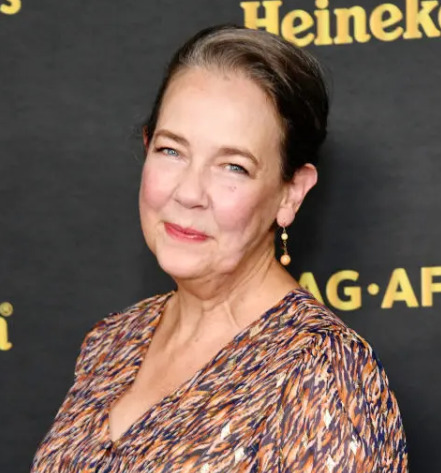

Harriet Harris (1955)
"HARRIET HARRIS (Madame) is enjoying a career of highs and not-so-highs. Due to word count constraints, let us focus on the omnium gatherum of highs. 2022 Tony and Drama Desk Awards for Best Featured Actress in a Musical for Mrs. Meers in Thoroughly Modern Millie. Other Broadway: Present Laughter, Cry-Baby: The Musical, Old Acquaintance and The Man Who Came to Dinner. Off-Broadway: Standing on Ceremony; Yeast Nation; Jeffrey (Drama Desk Nomination); Bella, Belle of Byelorussia (Drama Desk nomination), Christmas on Mars; Rude Entertainment. Regional appearances include Guthrie Theater, La Jolla Playhouse, Kennedy Center. Film Credits include Memento, Nurse Betty, Addams Family Values. TV credits include "Desperate Housewives" (as Felicia Tillman), "Frasier" (as agent Bebe Glazer). Member of the Acting Company, AEA." - Playbill bio from Cinderella, November 2013.
Carmen Cusack (1971)
"CARMEN CUSACK (Clare Boothe Luce) LCT: South Pacific (1st national tour), Broadway: Bright Star (Theatre World Award, Tony, Drama Desk, Outer Ctitics Circle, Drama League nominations). Off-Broadway includes Call Me Madam (City Center Encores!), and Carrie (MCC). Regional includes Designing Women (TheatreSquared), Lempicka (Williamstown Theatre Festival), Annie McDougen in First Wives Club (Chicago), Dot in Sunday in the Park with George (Chicago Shakespeare Theater), and Elphaba in Wicked (1st national tour; also Melbourne, Australia). West End includes Fantine in Les Miserables, Rose in The Secret Garden (Royal Shakespeare Company), Saucy Jack and the Space Vixens (The Venue) and Kim in Personals (Apollo Theatre). U.K. tour includes Christine in The Phantom of the Opera and Eve Cassidy in Over the Rainbow. Film: A Beautiful Day in the Neighborhood. TV: "Sorry for Your Loss" (Facebook Series).
NEW PROPAGANDA AND MEDIA UNDER CUT: ALL POLLS HERE
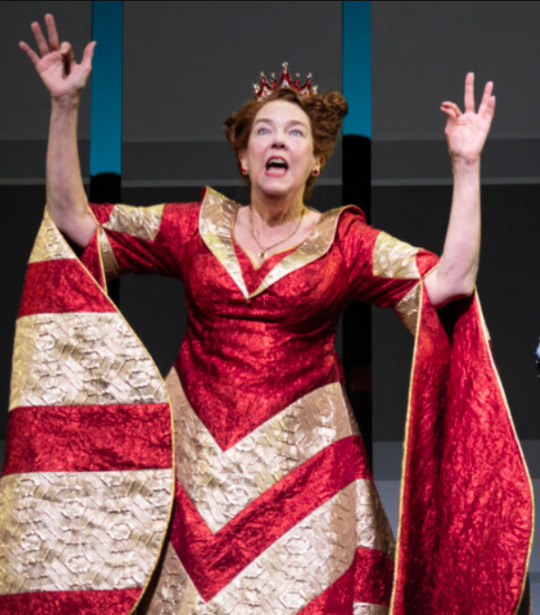
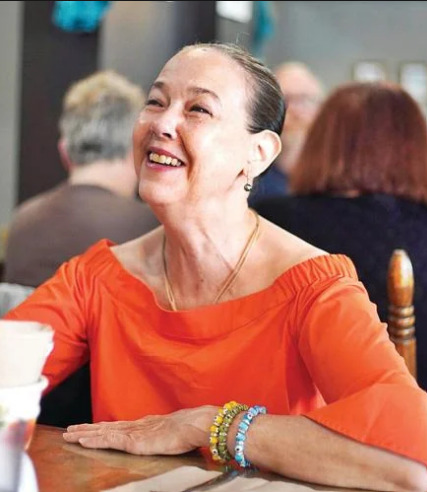
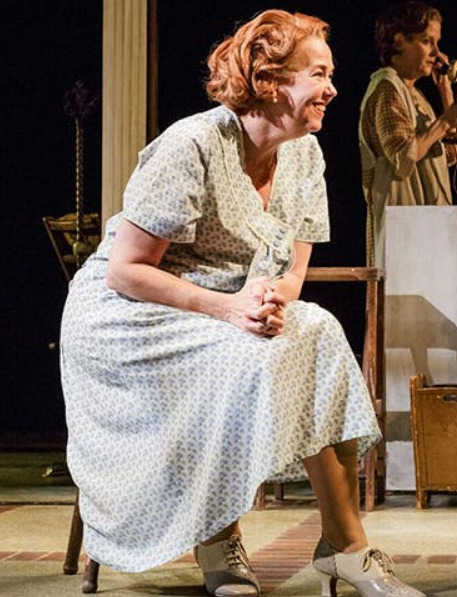
youtube
"Harriet Harris is a delightfully batty old broad who is killing it in her late-stage career. She is booked, busy, and getting the recognition she deserves."

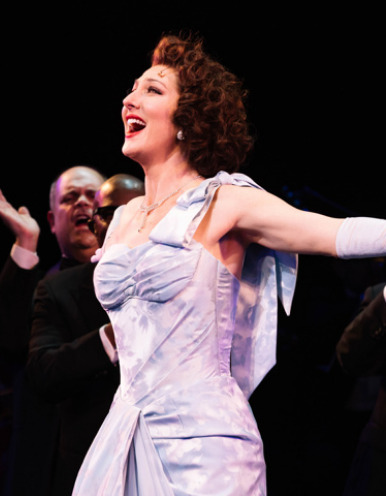

youtube
"Look, 2016 was the Hamilton year, and Bright Star was probably not a strong contender even without it, but I remember being vividly enamored by the pretty woman who did the Tony performance. Lo and behold, Carmen Cusack."
#broadwaydivastournament#broadway#broadway divas#tournament poll#harriet harris#harriet sansom harris#carmen cusack#round 2a
5 notes
·
View notes
Text




IMAGENES Y DATOS INTERESANTES DEL DIA 30 DE JUNIO DE 2024
Día Internacional de los Asteroides, Día de las Redes Sociales, Día Internacional del Parlamentarismo, Día Mundial de la Artrogriposis Múltiple Congénita, Día Mundial de la Pipirrana, Año Internacional de los Camélidos.
San León, San Marcial, Santa Lucina, Santa Adalsinda y Santa Adilia.
Tal día como hoy en el año 2009
Aun avión Airbus de la compañía Air Yemenia que cubría el trayecto de Saná a Comoras cae en el océano Índico, de las 153 personas que iban a bordo sólo una niña es rescatada con vida.
2000
En el Festival de Roskilde (Dinamarca), durante la actuación del grupo Pearl Jam, mueren aplastadas nueve personas.
1971
Tras realizar un perfecto aterrizaje en Kazajstán (Unión Soviética), los tres cosmonautas rusos (Teniente Coronel Georgi Dobrovolsky, Vladislav Volkov y Viktor Patsayev) de la nave "Soyuz 11" son hallados muertos en el interior de la cápsula sin aparentes lesiones físicas. La investigación posterior llegará a la conclusión de que los tres cosmonautas murieron por un fatal aumento de su presión arterial, causada cuando la cabina se despresurizó rápidamente, debido a un escape de aire a través de un agujero creado en el momento que la cápsula se separó del módulo de servicio poco antes del aterrizaje. La tripulación había logrado un récord de permanencia en el espacio de 24 días, durante los que se acoplaron a la estación espacial "Salyut 1". Al principio se pensó que tan larga estancia podía estar vinculada con las causas de su muerte. (Hace 53 años)
1960
El Congo Belga alcanza la independencia de Bélgica bajo el nombre de República Democrática del Congo. Días después estallará una revuelta y Bélgica enviará tropas sin consentimiento del nuevo Gobierno con el objetivo de restaurar el orden público y proteger a los ciudadanos belgas que aún permanecen en el país. (Hace 64 años)
1934
En Alemania tiene lugar la "Noche de los Cuchillos Largos" en la que, por orden de Hitler, son asesinados o arrestados los principales dirigentes de las Sturmabteilung (SA). (Hace 90 años)
1908
Cerca del río Podkamennaya Tunguska, en Siberia central, tiene lugar una enorme explosión aérea, presumiblemente causada por un fragmento de cometa formado por hielo que, al estallar en la atmósfera terrestre, arrasa unos 2.000 km2 de bosques de pinos. (Hace 116 años)
1898
En Filipinas, una patrulla rutinaria mandada por Saturnino Martín Cerezo cae en una emboscada de los insurgentes filipinos, a cuyo frente va Teodorico Novicio Luna. Los españoles se refugian en la iglesia del pueblo de Baler, al ser el edificio más sólido y que mejor defensa puede tener en caso de prolongarse la situación. Acaba de comenzar el sitio de "los úlitmos de Filipinas" que se prolongará 337 días. Finalmente, el 2 de junio de 1899, el destacamento español se rendirá. Las autoridades filipinas aceptarán la capitulación y permitirán su repatriación a España. El presidente filipino Aguinaldo emitirá un decreto exaltando su valor. (Hace 126 años)
1889
En el bello auditorio del Hotel Continental de París (Francia), en una era en la que no existen medios establecidos para que gobiernos, parlamentos o parlamentarios trabajen juntos de manera internacional, el francés Frédéric Passy y el inglés William Randal Cremer, fundan la Unión Interparlamentaria (UIP) con el propósito fundamental de lograr la paz, la cooperación entre los pueblos y la consolidación de las instituciones representativas a través del diálogo político. (Hace 135 años)
1862
En Francia se publica el último capítulo de la novela más conocida de Víctor Hugo, "Los Miserables", un relato sobre la lucha contra las injusticias sociales que trascenderá su época y se convertirá en un referente mundial y un símbolo de la lucha de los oprimidos. El autor, por sus opiniones políticas, ya lleva una década en el exilio de Guernsey, una dependencia de la Corona británica ubicada en el canal de la Mancha. (Hace 162 años)
1688
Para conjurar el peligro que supondría una dinastía de reyes católicos en la Inglaterra anglicana, los dos partidos mayoritarios del Parlamento, whigs y tories, se ponen de acuerdo para que el príncipe protestante Guillermo III asuma el poder. Es la Revolución Gloriosa en la que, sin derramamiento de sangre, Guillermo III se hace con el poder y firma el "Bill of Rights" uno de los documentos más trascendentales de la historia constitucional inglesa. (Hace 336 años)
1520
Ante los rumores de que los aztecas están preparando un ataque a los españoles, los conquistadores deciden huir de Tenochtitlán, capital del imperio azteca para tratar de llegar al territorio aliado de Tlaxcala. Mil trescientos españoles afrontan la "Noche Triste" en la que mueren seiscientos de ellos y cerca de novecientos nativos aliados, además de cuarenta y cinco caballos. En un árbol de las inmediaciones, Hernán Cortés llorará la amarga derrota. (Hace 504 años)
1 note
·
View note
Text

― conoce a 𝐦𝐞𝐥𝐢𝐬𝐬𝐚 𝐠𝐫𝐞𝐞𝐧𝐠𝐫𝐚𝐬𝐬 née rosier.
pronombres: ella/suya.
edad: 25 o 26 años.
ocupación: a gusto de le usuarie.
alianza: lord voldemort.
estado civil: casada con vincent greengrass.
personaje semi canon.
sangre pura.
antigua slytherin, generación 1971 a 1978.
no disponible.
they say i did something bad, then why's it feel so good?
𝐮𝐧𝐨. nacida en el invierno, melissa, la mayor de las rosier, siempre supo que sería grande o sería nada. su madre le crio de una estricta manera: muéstrate dulce, suave e inocente, pero sé de hierro y fuego por dentro. desde pequeña le educaron para ser toda una señorita, siempre siguiendo las instrucciones de su madre y manteniendo el noble legado de su familia. melissa era una dama en todos los sentidos.
𝐝𝐨𝐬. la atención le era arrebatada por florence, su hermana menor. no vivía a su sombra, más, en las reuniones sociales, y en su propia casa, florence parecía ser más importante que ella. no comprendía el por qué. era bonita, sí, pero ella era hermosa. además su hermana menor era tímida, torpe y parecía que nunca sabía que estaba haciendo. la envidia y los celos crecieron como raíces en el interior de melissa. desde entonces se dedicó a demostrar que ella era mejor, y que su aburrida hermana no merecía tanta atención. nunca fue la hermana mayor que florence merecía, solía aconsejarle cosas que la ponían en ridículo, y no podía evitar reír al verla llorar. le hacía la vida miserable hasta que esta demostró no ser como los greengrass. en aquel momento, toda la atención se redirigió a melissa.
𝐭𝐫𝐞𝐬. con su hermana fuera del camino, melissa se centró en lo que siempre ha deseado: poder. sabía que tenía que casarse con un mago poderoso, soñaba con trabajar en el ministerio e incluso algún día volverse ministra de magia, para que todo el mundo estuviera debajo de sus pies. todo lo que quería era tener poder, y conforme lo comenzó a conseguir, saboteó a los demás, piso a otros cuantos y se aprovechó de muchos. se creó un nombre en el colegio. melissa se piensa a sí misma como una reina sin corona.
𝐜𝐮𝐚𝐭𝐫𝐨. todo el mundo sabe quién es. la mayoría la encuentra insoportable, otres le temen, y una minoría la encuentra fascinante. melissa no quiere que la amen, quiere que le teman. no sería aconsejable meterse con ella, sabe en qué punto golpearte y con qué. en realidad no le interesa escuchar sobre lord voldemort, obviamente está de su parte, así como toda su familia, más nunca consideraría pelear por él. ese es el trabajo sucio, y ella no lo hará. sin embargo, guarda un secreto que nadie más sabe, y el cual no está dispuesta a confesar: durante su quinto año en hogwarts, torturó a uno de sus compañeros hasta la inconsciencia, todo para evitar se le acusara por un enorme engaño que le costaría su calificación en encantamientos. a diferencia de florence, que tardó en conocer el mundo oscuro en el que nació, melissa siempre lo supo. sus padres se lo dejaron muy claro, es por eso que nunca deja que nadie pase sobre ella. sabe que si no es así, no sobrevivirá, y está lista para hacer lo que tenga que hacer.
𝐜𝐢𝐧𝐜𝐨. la pérdida de su hermana no representó un problema para ella. por supuesto que fingió sufrir ante ojos ajenos, pero internamente le dio lo mismo. sabía que tarde o temprano, florence sufriría aquel destino. la supervivencia del más fuerte. al final, tras graduarse de hogwarts, le comprometieron con vincent greengrass, alguien de apellido poderoso como deseaba, con quien tiene a dos pequeñas: astoria y daphne. su matrimonio es lo más frio posible, pero a ella no le podría importar menos. al fin y al cabo era sólo un paso más.
𝐜𝐮𝐫𝐢𝐨𝐬𝐢𝐝𝐚𝐝𝐞𝐬: es rica y nunca escatima en gastos, detesta a quienes se emborrachan y el olor del cigarro, adora el color morado, tiene un selecto grupo de amigas compuesto de chicas sangre pura de grandes apellidos, disfruta mucho de los eventos sociales.
relaciones: eleanor parkinson (mejor amiga), vincent greengrass (esposo), narcissa malfoy (enemiga), lucius malfoy (antiguo crush), evan rosier (primo), florence rosier (hermana).
posibles rostros: marlo kelly, renée rapp, macarena achaga, emma mackey, halston sage. preferiblemente rubia o castaña.
― melissa es educada, inteligente y ordenada, con un rostro salido de un cuento de hadas, pero también es egoísta, cruel y falsa, razón por lo cual resulta desagradable para muchos.
0 notes
Text
Who’s to blame for Giants’ miserable 1-5 start?
By: Benjarmin Munguia
Date: October 21, 2023

A year ago. The New York Giants surprised the NFL by going 9-7-1, and making the playoffs with new head coach Dave Daboll who later would win AP Coach of the Year. They beat the Minnesota Viking 31-24 in the Wild Card Round of the playoffs, but were bounced by their divisional rivals the Philadelphia Eagles 38-7 in the Divisional round.
Things seemed to make a new turn for the gloomy franchise to get back their winning ways. Daniel Jones was granted a contract extension a four-year, $160 million. Details included $82 million fully guaranteed and an additional $35 million of incentives. This made him a top ten paid quarterback in the NFL. Barkley stuck around for another year, signing him to a one-year $11 million deal after an “intense” holdout over the offseason. Things seemed to go the Giants way.
Until the 2023 season.
The New York Giants, heading into week 7 are off to a miserable 1-5 start. Not scoring any points in the first six quarters of the season, 32nd scoring offense. Its been a mess.
A lot of the blame has been put on Giants quarterback Daniel Jones. Nobody wants to see a player get a contract extension and go backwards in their career.
Jones, in 5 games, has thrown for 2 touchdowns and 6 interceptions. 2 of those touchdowns came from their win of the season against the Arizona Cardinals.
While Jones has been below subpar this season, does he deserve all the blame for the 1-5 start? There are other massive problems to address.
The O-Line
The offensive line has been a problem for the Giants over the past decade, but this is by far the worst season this franchise has ever seen. In 7 games they've allowed 33 sacks this season. 2nd most in the NFL behind their divisional rivals, the Washington Commanders (34.)
Jones missed the Week 7 matchup due to a neck injury. Playing the first 6 games, Jones has been sacked 28 times. That was the most for a quarterback up until that point this season. There's not much a quarterback can do when you are being sacked almost 6 times a game.
Defensive Line
Dead last in the NFL in sacks is the Giants, having only 5 sacks on the year. Defensive end Kayvon Thibodeaux has four of those sacks. They are currently on pace to have 10 sacks on the year, which is a big difference from a season ago when they had 41 sacks throughout the year. They had 13 sacks through the first six games a season ago.
The Giants are on pace to break their franchise record of least amount of sacks with 10 this season. That would beat their 1971 season of 18 sacks. That team went 4-10 in 1971.

The Giants are 31st in rush defense, giving up 885 rushing yards this season. Only behind the Denver Broncos with 1034 rushing yards.
The Giants have allowed 100+ rushing yards every game this year, including 222 yards when they faced the Miami Dolphins where they lost 16-31.
It may look like the season could be over. There have been three teams who've reached the playoffs after a 1-5 start.
The 2018 Indianapolis Colts started 1-5 and finished 10-6 making to the divisional round where they lost to the Kansas City Chiefs 13-31.
2015 Kansas City Chiefs started 1-5 and finished 11-5, making it to the the divisional round where they were beaten by the New England Patriots 20-27.
The 1970 Cincinnati Bengals were also a team that started 1-5, then finished 8-6, but were defeated by the Indianapolis Colts 17-0.
If the Giants address these problems, could they have a shot at making the playoffs?? They only play 3 teams that have winning records. Dallas Cowboys, Los Angles Rams, and they play the Philadelphia Eagles twice.
0 notes
Text

HARRY EL SUCIO (1971)
Se lo que estás pensando miserable. ¿Disparó 6 o solo 5 veces? Para serte sincero con tantas emociones perdí la cuenta amigo, pero tratándose de una Magnum A-44 el arma más poderosa en el mundo y que podría volarte la cabeza, tendrás que hacerte una sola pregunta. ¿Soy un hombre con suerte?
0 notes
Text
Los miserables, 1971 – “Holy Hugo, they included ‘insert rare scene here’!”
Wrote this a while ago and realised I never posted it. So here goes.
Do you have a favourite obscure scene or detail in Les misérables that hardly ever makes the cut in screen adaptations? If you do, this might just be the adaptation for you. If you want to see an adaptation that tells the story well, however, this is not for you.
It's a nineteen-part (coincidence? I think not...) TV adaptation by the Spanish channel RTVE within its show “Novela”, a show of multiple literature adaptations that ran for fifteen years in total!
And the best part: You can see it all online on RTVE's webpage: http://www.rtve.es/alacarta/videos/los-miserables/
You can skip all episodes with mod 5 = 1 (except the first one), those are the episodes originally shown on Mondays, recapping what happened last week.
Like the Italian TV adaptation, this is unfortunately hindered by its budget. Unlike the Italian TV adaptation, this has the additional problem of its screenwriter's frankly bizarre understanding of concepts such as “pacing” and “importance”.
Now, don't get me wrong, I think it's rather cool to have an adaptation that includes many of the more obscure scenes, but I know the book and I know the context for all of these. I think asking how much sense the plot actually makes to someone who only knows this adaptation is a legitimate question.
Time is “wasted” on montages, dream-sequences and scenes of characters tossing and turning in bed, all of them many times longer than they have any right to be. Partially, it feels like the screenwriter couldn't decide which plot details to include and then just tried to incorporate as many of them as possible – continuity be damned. As an example, he took the time to include Mabeuf's death at the barricade, but it doesn't mean anything, since it happens to a character we have never seen before. Because Mabeuf's entire background is missing. To top it off, the watching students call him “le conventionel”, probably just to tick another box on the check list. To get another time saver, “show, don't tell” is occasionally blatantly violated. We get Valjean's entire history from him telling his life story to the bishop. The backstory of Marius and Gillenormand is conveyed in their fight before Marius leaves, meaning all the info is solely for the benefit of the audience, because all characters involved already know this stuff. Yet, bizarrely, they occasionally have time for a “show” where none would have been necessary. We get a far too long montage of Fantine with Cosette in Paris, that includes Fantine getting fired from her old job. Honestly, you can cover the question of why Fantine leaves Paris with a single line – you know, like it's done in the original?
I wouldn't usually mind, but it not only messes up the pacing, but it also takes up time that could have been used to flesh out some of the details. Or even some of the main plot points. We have Marius letting Thénardier go at the end, but Marius doesn't owe him a debt in this one. It might have made the Gorbeau robbery easier, but at the end, Marius has no real reason to not call the police. That is, if Thénardier is even a prison escapee. It's never shown nor mentioned how he got out of prison after the Gorbeau house robbery. On a smaller scale, it leads to a few bizarre moments, where introductions or transitions are missing, as if someone was trying to cut the corners wherever possible. For example, one episode starts with Marius' and Gillenormand's fight, without any introduction to their conflict or any real introduction of the characters (apart from Marius being the cute boy from the park). Or take the Champmathieu trial. The prosecutor asks for the witnesses to be heard and the very next moment, the judge is already questioning Brevet. No scene of the witnesses entering the room or at least the camera pointing out that they've been there all the time (because I definitely missed that in the overhead shots of the fairly small courtroom set); no scene of the judge calling the first witness, which becomes even worse when he does it to every subsequent witness.
Between this kind of overly short editing and long, drawn-out scenes of Marius healing (which commits the additional cardinal sin of making us think that it's finally over with a short conversation, only to continue for another minute or so) or of Fantine tossing on her bed (which we only later realise is prossibly Cosette's birth!), it feels a bit like there were too many people involved and no two of them could disagree over the tone and style of this adaptation.
I have another, if slightly petty, complaint: Why do the opening credits contain pictures of scenes we never get to see? It makes it pretty hard to identify which actor played which character and it also made it look they would include scenes that end up not being there. From the credits, you could be forgiven for thinking that there are scenes in Toulon, that Valjean's sister shows up or that they include the scene where Éponine stops Patron-Minette from robbing the house in the Rue Plumet. None of these actually happen.
Just to finish my list of complaints about this adaptation, let me talk about Javert. Now, I like the basic idea of what they did with the character, if only because it is the opposite to what most other adaptations do. In many adaptations, Javert is portrayed as a far more villainous character than in the book. These guys went the opposite way. Javert is calm and polite most of the time (making his one outburst when he arrests Valjean even more meaningful) and in one scene seems concerned about Fantine's safety (while she's still employed at Madeleine's factory that is), when he meets her in a disreputable part of town after dark and insists on accompanying her to her destination. Yes, it's later made clear that he still uses this to find out what she was doing there in the first place and this is what kicks off the chain of events leading to Mme Victurnien finding out about Cosette, but the two scenes taken together imply that Javert is both caring about the safety of an innocent civilian and spying on said civilian, just in case they're not as innocent as they seem to be. If they had done it like this throughout the movie I wouldn't be complaining.
Yet, it also means they had Javert come up to Madeleine, stating that he is happy to be the first to congratulate him about his appointment as mayor. It makes Javert's later resentment of Madeleine seem quite petty. Or the end of the “Confrontation”, where Javert, rather than leading Valjean out of the room, just makes a hand gesture to ask him to step out. Which again could have worked, but then he would have had to stay polite for all of the scene. Which he didn’t. They also decided not to stick to it for the entirety of the series. The portrayal of Javert in the later parts is more “traditional”, so to speak.
The acting is solid, for the most part, but hardly ever outstanding, although I’m likely not the best judge. Valjean's acting is fairly, occasionally too, subtle and he's a bit too calm for my taste in his entire encounter with the bishop. The actor, Pepe Calvo, is better known for his work in spaghetti western movies and I've by now realised that the reason he seemed familiar to me from the beginning is because of the western “Dead Men Ride” which I saw as a child, in which he plays a Myriel-like character of all things. I've described my thoughts on Javert, but I think that is due to decisions by the director and the scriptwriter, not the actor. Fantine has an annoying tendency to overact, especially in the later parts of her appearance. Cosette, fortunately not played by the same actress, is a bit boring. Little Cosette, however, does outstanding work for a child actress. Both Thénardiers are decent; they went the “Mme Thénardier needs to look sufficiently trustworthy for Fantine to leave her child with her”-route and she doesn't quite manage to be as scary as she should be. Everybody else is rather unremarkable.
Oh, and while we're at it: If you cast as Cosette an actress who actually looks like a teenager and as Marius an actor who might be in his early thirties, you need to specify that Marius is only a few years older than Cosette. Please!
But now to what I like about this adaptation: It's occasionally insane attention to details.
I've complained about the over-abundance of dream-sequences, but some of them really work. Showing one of Cosette's daydreams explains her life, character and dreams much better than any number of “real” scenes could have. Even more awesome is the inclusion of Valjean's dream before the Champmathieu trial. I mean, “Tempête sous un crâne” is usually going to be a weird scene anyway, you might just replace it with a weird dream while you're at it. Also, holy shit, they included Valjean's dream! That's a definite first.
Here's a list of further uncommon scenes this movie has:
-Valjean steals Petit-Gervais's coin, although he does it before meeting the bishop
-The bishop gets some exposition. It's only done in two conversations with his sister and Mme Magloire, but it's there
-The scene of Tholomyès and Co. dumping the girls
-A meeting of the Amis verbatim from the book
-Gillenormand believes Marius to be dead and faints when Marius opens his eyes.
And here's a list of crazily uncommon scenes this movie has:
-Fantine's meeting with the Thénardiers includes the girls using a cart chain as a swing
-Details about work in the jet factory
-Fantine thinks she hears Cosette outside the hospital
-Cosette lying about watering the guest's horse
-The coffin-escape! In full, glorious length and details.
-Javert has a letter from the prefect in his pocket
-Marius' note to identify his corpse
-Escaping from the barricade in National Guard uniforms (although Valjean doesn't put in the one he is currently wearing)
-Valjean writes the letter explaining to Cosette the origins of his fortune
Also, the ending is really well done. I really recommend you watch it for yourself, I don't think describing it can do it justice.
Generally, avoid this for a first look at Les Mis, but for a fan this is an interesting adaptation to watch and I suggest you give at least some parts a look, if only for the novelty.
33 notes
·
View notes
Text
Les Miserables Adaptations Tracklist
This is just a list for my own use to help me keep track of adaptations I’ve seen, mostly in groupwatches, and/or /posts I’ve got about them! Going to be a WIP obviously!
1897, Victor Hugo et les principaux personnages des misérables, a short film by the Lumière brothers: really just a very quick Cosplay reel
1925, directed by Henri Fescourt: one of the most brilliant adaptations! Stellar performances, great crowd scenes.
1934, directed by Raymond Bernard and starring Harry Baur, another excellent classic version
1935, directed by Richard Boleslawski and starring Fredric March as Valjean, Charles Laughton as Javert- “Hayes Code Les Mis” , featuring some very conservative politics
1943, Los Miserables, a Mexican adaptation directed by Renando A. Rovero; notable for starting at the convent, saving Valjean’s backstory for the very last episode.
1948 I Miserabili: featuring ACTION VALJEAN! The daring horse stealing escape! the foundry fire escape! the...honestly horrible bit with Catherine the doll... Anyway still watching it but it belongs here now!
1952, directed by Lewis Milestone, aka The One With Robert, and Valjean’s pottery factory
1958, directed by Jean-Paul Le Chanois, starring Jean Gabin; feat. Waterloo, an OFPD scene, and the Wacky Chase Scene. Otherwise notable for being pretty boring, honestly!
1964, I miserabili, Italian TV-miniseries, almost 10 hours long; a thorough adaptation with the feel of theater and a lot of rarely-adapted scenes, including a musing on Waterloo and the escape from the Orion
1966, Gavrosh, Soviet animation short
1967, BBC miniseries, directed by Alan Bridges, starring: Frank Finlay as Valjean. 3 hours of one of the best adaptations I’ve ever seen, and two of the drunkest.
1971, Los Miserables, Spanish production by TVE as part of the Novela TV series, directed by José Antonio Páramo and starring José Calvo as Jean Valjean; heavy on dream sequences/ surreal imagery, an interesting take!
1972, French TV miniseries directed by Marcel Bluwal, focusing almost entirely on the post-timeskip Paris events.
1977, Cosette, Soviet claymation short
1978, a British telefilm directed by Glenn Jordan and starring Richard Jordan as Valjean, Anthony Perkins as Javert, Javert does a flip into the Seine, I genuinely recall nothing else.
1982, directed by Robert Hossein , AKA The One Where Catherine Kills Valjean
1992, a 26-episode French animated TV series by Studios Animage, AB Productions, Pixibox and Studio SEK
1995, directed by Claude Lelouch and starring Jean-Paul Belmondo; a multilayered adaptation , set in the early 20C , more about Les Mis as Les Mis and the way the issues and stories it tells keep playing out than a straight adaptation of the story.
1998, directed by Bille August and starring Liam Neeson as Valjean, Geoffrey Rush as Javert, Uma Thurman as Fantine,
2000, 6-hour French TV /3 hour English TV movie miniseries starring: Gérard Depardieu; Everyone’s Problematic Least Fave!! Either horrible or just boring, depending on the version you see.
2007, Les Misérables: Shōjo Cosette, a 52-episode Japanese animated TV series
2012, adaptation of the stage musical
2014, Bedtime Story TV, a short animated adaptation covering only Valjean’s encounter with Myriel
2019, a six-part BBC miniseries by Andrew Davies: **stares into the distance**
2019, 2-hour Fuji TV Les Misérables Owarinaki Tabiji : Jdrama LM, Earthquakes and Reconciliation
#filmed adaptations#other adaptations#not including the stage show!#there we go I think that's it#watchalong list
59 notes
·
View notes
Text
“When the red curtain opens
A biography

Act 1. “Draw the Curtains!”
Maria Lea Carmen Imutan Salonga or more famously known as simply “Lea Salonga” was born on the 22nd of February, 1971 in Ermita, Manila. She was born to her father, Feliciano Genuino Salonga and her mother Ligaya Alcantara Imutan and became a sister to her brother, Gerard Salonga. Mr. Feliciano was a naval rear admiral and a shipping company owner. For her first six years in life, she lived in Angeles City before moving to Manila. She was a kid who loved to sing with dreams bigger than the Earth itself.
Her childhood was already part of the opening act of her life’s play as at the early age of seven, she made her professional debut in the musical “The King and I” in 1978 with Repertory Philippines. A Filipino theater company. After “The King in I”, she managed to secure the title role in her next play “Annie” and acted in the play in 1980. By the age of 10, she was able to record her first album “Small voice” in 1981 and it was well received by the masses as it was certified gold here in the Philippines. She also made left and right appearances in various plays such as “The Fantasticks” and “Paper moon” from 1988 and 1983 respectively. Her early childhood was full of acting and theater as that’s what she loved doing. She was a performer at heart.

Throughout the 1980s, Lea Salonga was steadily gaining popularity as she was featured in many television projects from GMA radio television arts. She was a child actress at the time and following her first album’s success, she was given an opportunity to host her own television show and this was named “Love, Lea”. Lea also made appearances as a member of the cast for a teen variety show “That’s entertainment” hosted by the late German Moreno. Because of her amazing acting skills and innate talent for it, Lea received multiple awards from FAMAS (Filipino Academy of Movie Arts and Sciences) and Aliw awards. The latter awarded her three times for three consecutive years for being the “Best Child Performer” of 1980, 1981, and 1982. Talk about consistency!
By 1988, Lea released her second album simply entitled “Lea” and in that same year, she finished her High School Education) at O.B. Montessori Center located at Greenhills, San Juan, Metro Manila. Lea also attended an extension program by the University of the Philippines College of Music that trains musically talented children and teens in Music and stage acting.

Act 2. “The Opening Act”
At the age of 17 years old, Lea auditioned for the role of the main character in the play “Miss Saigon” named “Kim”. In her audition, Lea chose to sing “Boublil” and “On my Own” by Claude-Michel Schonberg from the play “Les Miserables”. Because of her amazing singing ability, she was asked by the audition panel to sing “Sun and Moon” which impressed them. At the age of 18 in 1989, Lea was picked to play the role of Kim in Miss Saigon’s debut production held in London.
Lea Salonga was able to win the “Laurence Olivier Award for Best Actress in a Musical” in 1990 because of her successful performance as Kim in Miss Saigon. This made her one of the world’s youngest winners of the award which was a feat on its own. Also in the same year, she performed a homecoming concert in Manila named “A Miss Called Lea. In the following year, Lea won multiple awards from Theater World, Outer Critics Circle and Drama Desk from playing the same role in Miss Saigon’s play on Broadway. In the 1992 Disney animated film “Aladdin”, Lea became the singing voice for our beloved Princess Jasmine. In 1993, she achieved yet another feat of becoming the first ever woman of Asian descent to be awarded a “Tony Award”.

Act 3. “To The Center Stage!”
“Les Miserables” has been one of the most well known plays worldwide and in 1993, for the broadway production of the play, Salonga played the role of “Eponine”, the daughter of the Thenardiers. When the 65th Annual Academy Awards happened in Los Angeles in the same year, Lea performed as Jasmine in the song “A Whole New World” along with Brad Kane. In the awards show, the song won a deserving, Golden Globe Award! With the help of Atlantic Records, Lea was able to release her self-titled international debut album. In 1994, she was able to partake in multiple musical theater plays in the countries Singapore and Philippines. She took the roles of the witch in “Into the Woods” and Sandy in “Grease” to mention.
By 1995, Lea Salonga went back to the US to bring to life the role of an 18-year-old Vietnamese American adopted child named “Geri Riordan” in the television film “Redwood Curtain”. She proved herself to be still a busy woman as at the same year, she went back to the Philippines to act in the film “Sana Maulit Muli” along with Ariel Aquino Mulach or more famously known as Aga Mulach. Through this film, she was able to get her second FAMAS nomination as “Best Actress”. 1995 was also the 10th anniversary of Les Miserables and so, Lea flew all the way back to London to play Eponine in “Les Miserables: The dream cast concert” held at the prestigious Royal Albert Hall.
1997 was the year when Lea Salonga started making recordings and she started that off with her album entitled “I’d like to teach the world sing”. This album was well received by the Filipino people as the album reached gold sales in the Philippines. This album was then followed by the 1998 album “Lea…In heart” and the 2000 album “By heart”. These two albums were able to reach Platinum sales multiple times in the Philippines.

In 1998, she again collaborated with Disney and became the voice of the Disney animated film character “Mulan” and the singing voice of the same character in the film sequel “Mulan II” in 2004. Lea moved to New York City, USA where she purchased her apartment at the age of 28 and owned it until 2013. In the same year, Lea participated and performed at a tribute concert held for Cameron Mackintosh entitled “Hey, Mr. Producer: The musical world of Cameron Mackintosh.” By the years 1999 and 2000, Lea played the role of “Sonia Walsk” in the “They’re playing our song” musical.
Throughout the years of 2000 to 2003, Lea Salonga continued on making multiple appearances in various kinds of platforms from TV shows, musical and nonmusical theaters, and films which led to her appearances in multiple awards shows as well. By the 10th of January, 2004, she married the love of her life Mr. Robert Charles Chien whom she met in “Flower Drum Song”. The same year, she also performed her all-Filipino concerts entitled ”Songs from Home” which made her win the “Entertainer of the year” award from Aliw awards.
Act 4. “The Climax”

2005 was the year when Lea Salonga reached international status as she started to tour the world. She conducted her first US concert tour and in the same year, she managed to perform to a sold-out crowd at Carnegie Hall. Because of her international ventures, Lea was awarded with a “Golden Artist” award from FAMAS. In 2006, she performed for the closing ceremony of the 15th Asian Games held in Doha, Qatar with the song “Triumph of the one” at the Khalifa Stadium.
Lea then proceeded to release her first studio album in 2007 entitled “Inspired” which gained popularity and got platinum sales in the Philippines. She was also awarded by the former president Gloria Arroyo with the “Order of Lakandula” for using her abilities to the benefit of the Philippines and its people. Lea made more appearances on the theater scene with the return of Les Miserables, Broadway on Broadway, Stars in the alley, and more.

By 2008, she became a columnist for the Philippine Daily inquirer. She wrote her column “Introducing: Lea Salonga, writer” and from then on, started writing more and more columns. Lea went on to do singing performances throughout 2009 with her appearance in the 95th anniversary special of Iglesia ni Cristo singing the song “Bayan ko” and the concerts “Lea Salonga…Your songs” for the 20 years of “Miss Saigon”.
Following her singing performances, Lea made an appearance as a celebrity judge for the show “Avon Voices”. Speaking of being a judge, she also became one of the judges to sit on the judges panel of the 60th Miss Universe 2011 held in Sao Paulo, Brazil which happened at the 20th of September, 2011
Lea Salonga continued on making more concert appearances as in 2013, she was part of the Lincoln Center’s American Songbook Concert Series. She also played as a mother in the concert performance of “Ragtime”. In the same year, she started her concert tour in the Philippines “Lea Salonga: Playlist” which was done to celebrate her 35 years of hardwork and dedication in show business.
By 2014, she went back to making judge appearances to “The Voice” and “The Voice kids”. Throughout 2014, she continued touring around the world with multiple concerts. She made an American television appearance in 2016 with “Crazy-Ex Girlfriend” and another for the international premiere of “Fun Home” as Helen Bechdel in Manila.

Act 5. “The Curtain Call”
Lea Salonga’s career has been going smoothly even until the present. With her steady amount of appearances in the theater scene for the past 4 years, it proves that Lea has made her mark in the theater scene as a whole which she worked hard for since age seven. She’s currently living with her family and has a daughter named Nicole Chien. This year, Lea is planning to embark on another world tour on the 6th of April, 2022 entitled “Dream Again” which will start in North America.
To many theater kids, Lea Salonga is one of the many theater actors and actresses that these kids can look up to. She’s the perfect example of one who’s passionate about their dreams whatever it may be. Once a small town girl, now one of the big names of show business, Lea Salonga is a woman of passion, pure talent, and dedication to her craft. A true performer.
8 notes
·
View notes
Text






LES MIS LETTERS IN ADAPTATION - Foliis ac Frondibus, LM 4.3.3 (Los Miserables 1971)
There was a stone bench in one corner, one or two mouldy statues, several lattices which had lost their nails with time, were rotting on the wall, and there were no walks nor turf; but there was enough grass everywhere. Gardening had taken its departure, and nature had returned. Weeds abounded, which was a great piece of luck for a poor corner of land. The festival of gilliflowers was something splendid. Nothing in this garden obstructed the sacred effort of things towards life; venerable growth reigned there among them. The trees had bent over towards the nettles, the plant had sprung upward, the branch had inclined, that which crawls on the earth had gone in search of that which expands in the air, that which floats on the wind had bent over towards that which trails in the moss; trunks, boughs, leaves, fibres, clusters, tendrils, shoots, spines, thorns, had mingled, crossed, married, confounded themselves in each other; vegetation in a deep and close embrace, had celebrated and accomplished there, under the well-pleased eye of the Creator, in that enclosure three hundred feet square, the holy mystery of fraternity, symbol of the human fraternity. This garden was no longer a garden, it was a colossal thicket, that is to say, something as impenetrable as a forest, as peopled as a city, quivering like a nest, sombre like a cathedral, fragrant like a bouquet, solitary as a tomb, living as a throng.
#Les Mis#Les Mis Letters#Les Miserables#Les Mis Letters in Adaptation#Cosette#Cosette Fauchelevent#Los Mis 1971#Los Miserables 1971#Les Mis 1971#Les Miserables1971#lesmisedit#lesmiserablesedit#losmiserables1972edit#lesmiserables1971edit#pureanonedits#LM 4.3.3
52 notes
·
View notes
Text


LOS MISERABLES (1971)
Jesús Tordesillas as Bishop Myriel
if he has a million fans i'm one of them.. if he has 1 fan, it's me.. if he has zero fans, IM DEAD.
23 notes
·
View notes
Photo

Pride: 25 Queer Films To Love.
Dating Amber writer and director David Freyne introduces our London correspondent Ella Kemp to 25 of his favorite LGBTQIA films.
A coming-out, coming-of-age film, David Freyne’s Dating Amber follows “baby gays” Eddie (Fionn O’Shea) and Amber (Lola Petticrew), who act as each other’s beards in order to stop speculation about their sexualities. Released on Amazon Prime Video in the UK for Pride month, it’s winning praise from Letterboxd members as a “charming” and “gentle” comedy-drama “full of loveliness that extends beyond the Irish accents”.
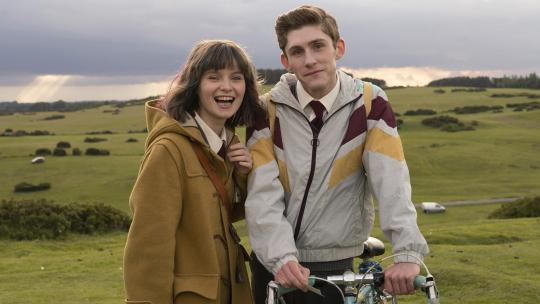
Lola Petticrew and Fionn O’Shea as Amber and Eddie in ‘Dating Amber’.
As the number of films by and about the gay and trans community expands, we asked Freyne if he could narrow down a list of ten favorites for us. The answer was no—instead, we got 25!
“There are so many extraordinary queer films beyond this list, but all of these films just really affected me when I saw them. Some were the first time I saw queerness on screen, while I deeply identified with others. And, as a filmmaker, each of them makes me braver to fight to tell stories that aren't always easy to get made.
“They are in no particular order because I don’t want to bump into Barry Jenkins (which is obviously going to happen) and have to explain that he is number five on that list (that he will definitely read) for no specific reason. It’s just a technicality.”
David Freyne’s 25 Favorite LGBTQIA+ Films
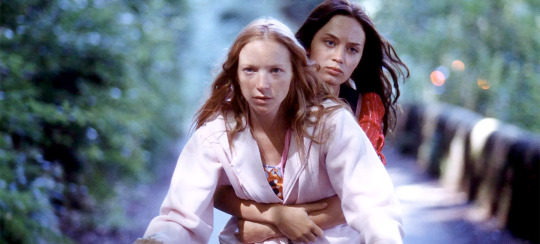
My Summer of Love (2004)
Directed by Paweł Pawlikowski
Paweł Pawlikowski’s film feels like a dream that sweeps you up along with it, helped along by incredible early performances from Natalie Press and Emily Blunt. The hypnotic use of Goldfrapp's ‘Lovely Head’ is probably my favorite use of a song in any film ever. Their drug-fuelled dancing was a massive inspiration for Eddie and Amber’s baby steps into Dublin’s gay scene in Dating Amber.
Weekend (2011)
Directed by Andrew Haigh
I never fail to cry buckets at the end of this heartbreaking gem. It’s small in the best sense of the word. Two people fall in love over one intimate weekend. Their gayness is both incidental and totally fundamental. It’s so delicate and moving. Andrew Haigh is a master.
But I’m a Cheerleader (1999)
Directed by Jamie Babbit
Jamie Babbit’s debut is a brilliant, campy comedy about a cheerleader sent to a conversion therapy camp. I love it for all the reasons many critics (at the time) disliked it. It is subversive, quirky and defiantly upbeat. And it stars Natasha Lyonne and Clea Duvall. Enough said.
Paris is Burning (1990)
Directed by Jennie Livingston
I’m not saying anything new when I say that Paris is Burning is necessary viewing. It’s a hilarious, moving and eye-opening look at the (mostly) Black trans women in New York’s ball scene. It is a glimpse into the lives of these extraordinary people who risked everything to live authentically, for themselves and each other. And at a time when our trans family is so under attack, it is vital to see such iconic figures from our community. You’ve probably seen it. Re-watch it. Also those end notes will make you cry.
Happy Together (1997)
Directed by Wong Kar-wai
As with all Wong Kar-wai’s work, it is jaw-droppingly gorgeous. It’s a tough watch, a portrait of a toxic, failing relationship. But it looks beautiful. They’re miserable and co-dependent. It’s abusive and awful. But it’s great. It really is a great film. I’m not selling this one well. Just watch it.
Moonlight (2016)
Directed by Barry Jenkins
Definitely worth watching after Happy Together. Not just because it will make you feel better, but because Barry Jenkins has noted it as a big influence. Also, Moonlight is a masterpiece. You know that, of course. Side note: I realize I’ll never be able to create a hand-job scene as powerful and tender as Jenkins did here, but, in Dating Amber, I made three comedy hand-jobs. Take that Jenkins!

God’s Own Country (2017)
Directed by Francis Lee
You can feel Francis Lee in every frame of this film. It’s personal filmmaking at its very best, with wonderful performances from Josh O’Connor and Alec Secăreanu. And it has the most beautifully romantic ending that you only realize we lack for LGBTQ characters when you see it laid out so wonderfully. When we were trying to finance Dating Amber and people suggested it was too Irish, I’d just reference God’s Own Country, which is so defiantly Yorkshire, and they’d shut up. Also, Secăreanu’s jumper with a thumb hole is my style icon. Bring on Ammonite!
Can You Ever Forgive Me? (2018)
Directed by Marielle Heller
Marielle Heller is such a brilliant filmmaker. This film is based on the memoir by Lee Israel who forged letters by famous people to sell. It’s a genre piece that feels like it could have been made in the 70s. But what I love about it the most is that it is a rare example of a film that centers the friendship between a lesbian and a gay man. Why do films usually treat us like we exist in totally separate worlds? Anyway, it’s a joyous watch.
Tangerine (2015)
Directed by Sean Baker
I’m obsessed with tightly plotted films and Tangerine doesn’t waste a frame. It’s 88 minutes of pure wit, charm and entertainment in line with the best of old-school Hollywood. You instantly forget that Baker’s film is shot on an iPhone and just get swept up in the extraordinary performances of Mya Taylor and Kitana Kiki Rodriguez. It’s such a mystery they don’t work more. (Reader: it’s not a mystery. It’s because they are Black trans women, and the industry is shit.)

Portrait of a Lady On Fire (2019)
Directed by Céline Sciamma
We all bow at the alter of Céline Sciamma. This film is perfection. The sparse-but-powerful use of music, exquisite photography and extraordinary performances that burn beneath the stillness. The final shots of Adèle Haenel will feed your soul for a year. (Side note: face masks have never looked so stylish.)
Sunday Bloody Sunday (1971)
Directed by John Schlesinger
This was John Schlesinger’s follow up to his best-known film, Midnight Cowboy. A middle-aged gay doctor (Peter Finch), and a divorced woman (Glenda Jackson), are both in an open love triangle with a younger, bisexual sculptor (Murray Head). It’s quite low-key and far tamer now than when it was released, but it’s a beautiful film and Schlesinger’s most personal. He was one of the few openly gay directors of his time. And Jackson’s performance steals it.
Far From Heaven (2002)
Directed by Todd Haynes
Todd Haynes’ stunning film will make you immediately go out and discover all of Douglas Sirk’s glorious technicolor melodramas. Julianne Moore’s performance as a wife who discovers her husband is gay will break you. Dennis Quaid is also terrific as her closeted husband.
The Watermelon Woman (1996)
Directed by Cheryl Dunye
Cheryl Dunye’s low-budget debut is a seminal queer film. A video store worker and documentarian (played by Dunye) starts a new relationship while becoming obsessed with ‘the watermelon woman’, a Black actress forgotten by history. It’s lo-fi, funny and a, far too rare, film about race and sexuality.

My Beautiful Laundrette (1985)
Directed by Stephen Frears
It may have been the first time I saw gay characters on screen and, at the time, it petrified me. But what an amazing film about love, acceptance and the power to change. Fun fact: Daniel Day-Lewis spent a year as a tumble dryer in preparation for his role.
Beautiful Thing (1996)
Directed by Hettie MacDonald
Hettie MacDonald’s coming-of-age film is so lovely, honest and tender. James Harvey adapted it from his own play of the same name. The soundtrack is almost entirely The Mamas and the Papas. I am surprised some cigar-smoking West-End mogul hasn’t attempted a musical adaptation. Or maybe they have, I don’t know.
Pride (2014)
Directed by Matthew Warchus
Such a purely entertaining film while being urgent, political and deeply moving. Beresford’s script is a masterclass in plotting and if you don’t cry at the end then you are dead inside. Sorry but that’s just science. Also it has the most emotional postscript coda since, well, Paris is Burning.
Love is Strange (2014)
Directed by Ira Sachs
Ira Sachs is one of my favorite current filmmakers and criminally underrated. I mean, he’s appreciated, but he needs to be lauded. Love is Strange is such a charming and quietly devastating love story about an older gay couple who lose their apartment and have to couch surf with relatives. It’s one of the most effective films in dealing with the rental crisis in big cities, something he does equally brilliantly in the follow-up, Little Men.
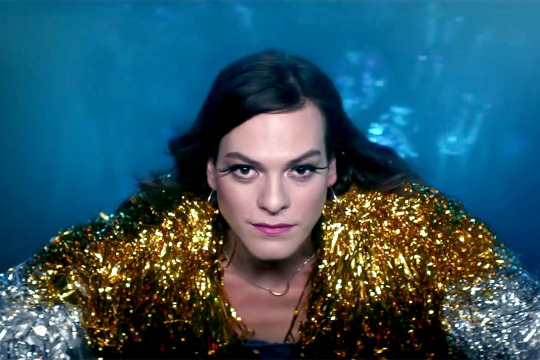
A Fantastic Woman (2017)
Directed by Sebastián Lelio
Sebastián Lelio’s film is a beautiful story about one trans woman’s grief after the unexpected death of her older partner. But what makes this film so spectacular is the captivating performance by Daniela Vega. We need to see more of her on screen.
BPM (Beats per Minute) (2017)
Directed by Robin Campillo
It’s a film about the AIDS activism of Act Up in 1990s Paris. What makes this so incredible is how joyous it is. Strobe-doused dance scenes punctuate this film that will make you want to take to the streets and fight for your rights.
The Queen of Ireland (2015)
Directed by Conor Horgan
This documentary by Conor Horgan follows Ireland’s most famous drag queen, Panti Bliss (aka Rory O’Neill). It’s about his life, a legal battle (a bunch of homophobes sued Rory for calling them homophobes on national TV) and the staging of a show in his hometown. Central to all this is Ireland’s historic vote on marriage equality, something that Panti was a powerful figure in. If you want to laugh and have your heart soar in seeing confirmation of how a once painfully conservative country moved to love and equality, watch this.
The Kids Are All Right (2010)
Directed by Lisa Cholodenko
Lisa Cholodenko’s feature is a warm, witty and realistic look at a lesbian couple and their children. Every performance is pitch perfect. I can’t believe it’s a decade old and that we have had so few similar films since.
Booksmart (2019)
Directed by Olivia Wilde
We need more joyous films with queer leads and Olivia Wilde’s debut is just that. Set over one night of belated partying, we follow best friends Molly and Amy (Beanie Feldstein and Kaitlyn Dever), one of whom happens to be a lesbian. It is just so much fun to watch.
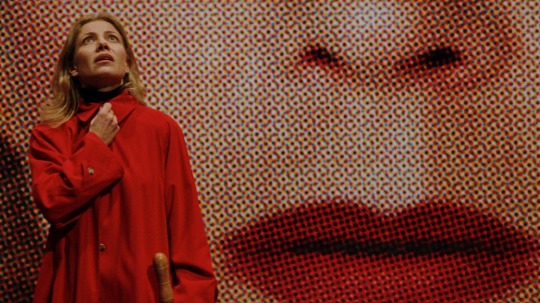
All About My Mother (1999)
Directed by Pedro Almodóvar
I mean this list could just be an Almodóvar filmography, but All About My Mother just happened to be the first of his I saw and it blew my little gay mind. It’s simply about love in its truest sense. Almodóvar said it best with his dedication, “To all actresses who have played actresses. To all women who act. To men who act and become women. To all the people who want to be mothers. To my mother.”
Female Trouble (1974)
Directed by John Waters
You can’t have a queer film list without John Waters, and this 1974 classic is my favorite of his. It follows Dawn Davenport (played by the legendary Divine) from teen delinquent to the electric chair. It’s hilarious, irreverent and distasteful in the ways only Waters can be.
Saint Maud (2019)
Directed by Rose Glass
Rose Glass’s debut film isn’t out yet and so technically shouldn’t be on the list. But I saw at a festival last year and loved it, so there. It’s a horror film about a private nurse (rising star Morfydd Clark) who tries to save the soul of her deviant and lesbian patient (the always-brilliant Jennifer Ehle). It’s eerie, stylish and the sort of debut all us filmmakers wish we had. Shut up, you’re jealous!
Related content
MundoF’s Opening the Vault: a chronological history of queer interest and LGBTQ+ cinema.
Leonora’s list of Films by Transgender Writers and Directors.
Out of the Closets and Into the Cinemas!: meeting queer folks in dark rooms.
New Queer Cinema
Queer Films Everyone Must See
Queer, Black, 21st Century: A Pride 2020 List
Autostraddle’s Top 200 Lesbian, Bisexual & Queer Movies of All Time
Brianna’s list of LGBT+ Animation
#david freyne#dating amber#irish film#queer film#gay director#gay cinema#queer cinema#gay pride#pride month#lgbt#lgbtqia#trans film#trans filmmaker#john waters#todd haynes#paris is burning#jamie babbit#pedro almodovar#pawel pawlikowski#celine sciamma#sean baker#lisa cholodenko#wong kar-wai#francis lee#booksmart#letterboxd
61 notes
·
View notes
Text
ANGELA CARTWRIGHT
September 9, 1952

Angela Margaret Cartwright was born in Altrincham, Cheshire, England, in 1952.

Shortly after Angela’s birth, the family - including older sister Veronica, also an actress - moved to Los Angeles.

She made her first film appearance at the age of three years as Paul Newman's character's daughter in Somebody Up There Likes Me (1956)...
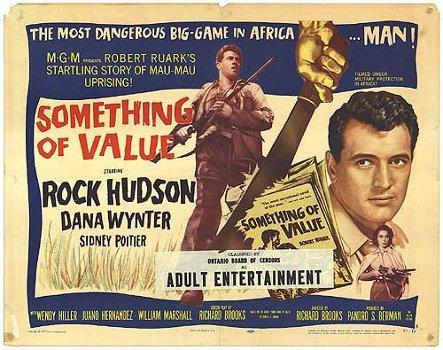
and appeared with Rock Hudson and Sidney Poitier in Something of Value (1957), which was labeled ‘Adult Entertainment’.

Cartwright joined the cast of “Make Room for Daddy” (later “The Danny Thomas Show”) in 1957 at the age of five.
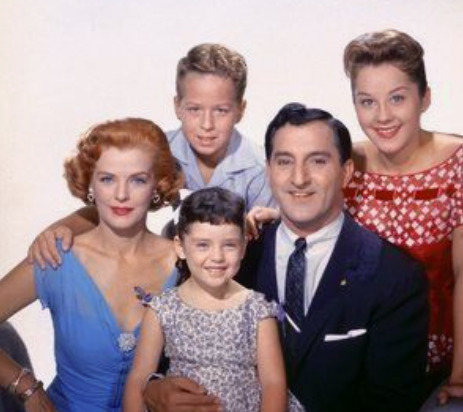
“Make Room for Daddy” (aka “The Danny Thomas Show”) ran from 1953 to 1957 on ABC and from 1957 to 1964 on CBS. In March 1953, Danny Thomas chose Desilu Studios to film it using its three-camera method, perfected on “I Love Lucy,” which ran concurrently on CBS.
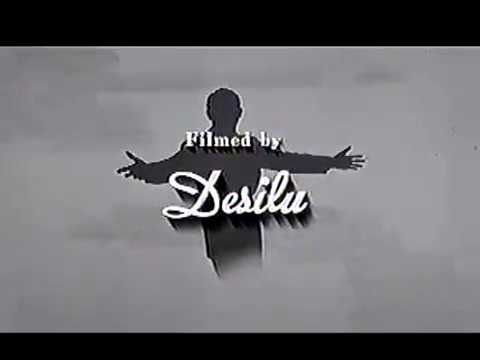
Shortly after the third season finished filming, Jean Hagen (who played Margaret, the Mother) left the show. It was explained that Margaret had died suddenly off-screen. In a four-part story arc that began in April 1957, son Rusty fell ill with the measles and Danny hired Kathy O'Hara (Marjorie Lord), a young Irish nurse, to look after him. Kathy was a widow with a little girl named Linda (then played by Lelani Sorenson). Not surprisingly, Danny quickly fell in love with Kathy, as did the kids.
When “I Love Lucy” went off the air (in its half-hour format) in 1957 and “Make Room for Daddy” was facing cancellation, CBS acquired the show and moved “Make Room for Daddy” into “Lucy's” old time slot. With the change of network, the producers also changed Kathy's daughter. Lelani Sorenson was replaced by Angela Cartwright as Linda. Linda was adopted by Danny, and the show's ratings dramatically increased. Never underestimate the ‘cute’ factor!
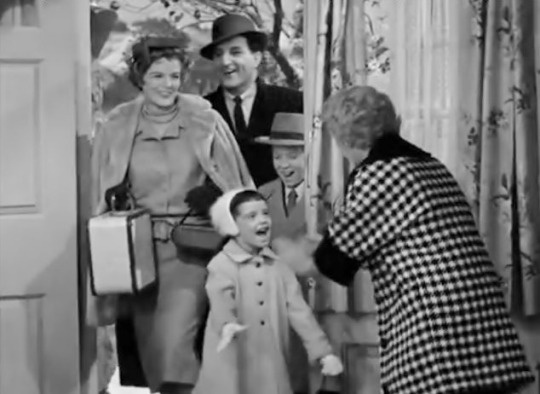
In “Lucy Makes Room for Danny” (LDCH S2;E2) on December 1, 1958, Lucy and Ricky sublet their Connecticut home to the Williams family (of “Make Room for Daddy”). When Lucy proves an over-protective landlady, the arguing families end up in court!

The night this “Comedy Hour” premiered, “Make Room for Daddy” also aired and concerned Little Linda’s tonsillitis, a subject previously covered by “I Love Lucy” in “Nursery School” (ILL S5;E9). Despite only a half hour passing for viewers, Linda is in perfect health when she arrives on the Ricardo’s doorstep at 9 o’clock!

This cross-over sets in motion a curious anomaly:
Lucy Ricardo meets Danny Williams (Danny Thomas) and his TV family on this episode of “The Lucy-Desi Comedy Hour”;
Danny Williams drives through the small town of Mayberry and meets Sheriff Taylor, which spawns “The Andy Griffith Show”;
“The Andy Griffith Show” is where the Gomer Pyle (Jim Nabors) character began, before getting his own show;
Gomer, although unnamed and uncredited, turns up on “The Lucy Show,” although here she is Lucy Carmichael, not Lucy Ricardo (even though both women share the maiden name McGillacuddy);
The upshot of all of this is that Lucy Ricardo and Lucy Carmichael both exist in the same world.

Along with her TV brother Rusty Hamer and Keith Thibodeux as Little Ricky, the young stars are called to testify in court about their parents’ poor behavior! Unexpectedly, the children are more polished and reasonable than their elders.
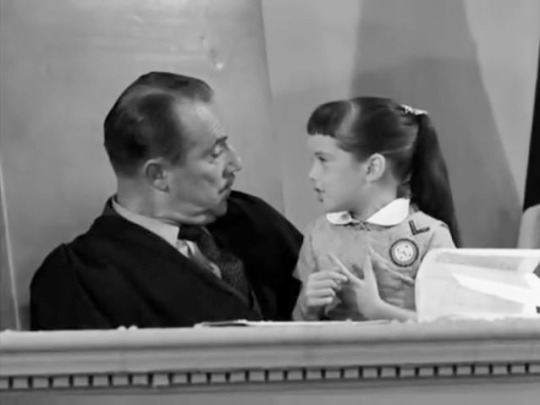
Linda gets some personal time with the judge, played by Gale Gordon. Linda suggests the final verdict: that Fred take Ethel to Florida for two months. She reasons that it will (a) cure him of being a miser, and (b) thaw his frozen ears!
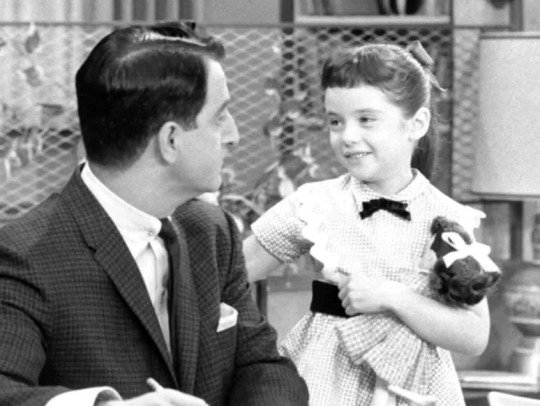
RICKY RICARDO (about Linda): “She’s a regular Lucy Junior!”
In a quid-pro-quo programming move, Lucy and Desi played Lucy and Ricky on “The Danny Thomas Show” on a January 6, 1959 episode titled “Lucy Upsets the Williams Household.” While rehearsing a nightclub show together, Danny Williams invites Ricky and Lucy Ricardo to move in to his apartment. Lucy and Kathy, meanwhile, are spending up a storm at the department stores. To curb their spending, the boys cut off their charge accounts in this battle of the sexes. The character of Linda is only briefly in the story and has no scenes with Lucille Ball.

Cartwright again played Linda Williams in “Make Room For Granddaddy” (1970-71). In January 1971, once again “Daddy” and “Lucy” cross-over, with Lucille Ball playing Lucy Carter of “Here’s Lucy”, Kathy’s old friend, coming to New York for a visit.

When Danny comes home from a trip, there is a series of accidental flirtations between Lucy Carter and Danny that make her believe he is being unfaithful to Kathy. The episode is alternately titled “Lucy and the Lecher” and (less controversially) “Lucy, the Houseguest.” Angela is then 18 years old. This time she gets to stay in the room for Lucy’s arrival!

In 1965 Angela played the role of Brigitta Von Trapp in The Sound Of Music, perhaps her most recognizable role, in one of the most famous films of all time. The film also featured “Lucy” alumni Norma Varden (as housekeeper Frau Schmidt), as well as background actors Leoda Richards, Bert Stevens, Norman Stevans, Bernard Sell, Monty O’Grady, William Meader, Sam Harris, Gertrude Astor, Leon Alton, and Steve Carruthers. The original stage musical (which did not feature Cartwright) was on Broadway at the same time that Lucille Ball was doing Wildcat. The musical’s composers, Rodgers and Hammerstein (aka Dick and Oscar) were frequently mentioned on “I Love Lucy.”

Also in 1965, Cartwright returned to television to play Penny, youngest member of the Space Family Robinson, on “Lost in Space” (1965-68). The Irwin Allen science fiction series went from a black and white drama in its first season, to a color comedy in its second and third. In the season one opening credits, the only character identified by name is Penny. Cartwright was 13 when the series began. “Lucy” alumni who made guest appearances in “Space” include Fritz Feld, Reta Shaw, Wally Cox, Michael J. Pollard, Strother Martin, John Carradine, Hans Conried (who also played her Uncle Tonoose on “Daddy”), Al Lewis, Stanley Adams, Arte Johnson, Norman Leavitt, Helen Kleeb, and Janos Prohaska. Cartwright has remained involved in the franchise, doing cameo appearances in the 1998 re-boot and the 2019 TV series.

Cartwright was back on the Desilu lot to guest star on two episodes of “My Three Sons” in 1965 and 1969.

Angela’s older sister Veronica made two appearances with her sister on “Make Room for Daddy” in 1959 and 1961, one with Lucy’s good friend and co-star Bob Hope. Veronica also appeared on “The Twilight Zone,” a show introduced on “The Westinghouse-Desilu Playhouse” in 1958 with Desi Arnaz standing in for Rod Serling as host.

Angela Cartwright married actor Steve Gullion in 1976. They have two children.

She has been a photographer for 30 years. She is also a fashion designer. Her work is displayed at her studio in Studio City, Los Angeles.
#Angela Cartwright#Make Room For Daddy#Danny Thomas#Lucille Ball#The Lucy Desi Comedy Hour#Lost in Space#The Sound of Music#The Danny Thomas Show#Veronica Cartwright#Steve Gullion#My Three Sons#Barry Livingston#Twilight Zone#Billy Mumy#Desilu#Linda Williams#TV Guide#Somebody Up There Likes Me#Something of Value#Jean Hagen#Here's Lucy#Gale Gordon#Make Room for Granddaddy#Marjorie Lord#Keith Thibodeaux#TV
25 notes
·
View notes
Text
Ro.Go.Pa.G. (1963)
Rodada en 1962, pero estrenada un año después con el título Laviamoci il cervello a causa de las denuncias por blasfemia que suscitó —ridículamente— el sketch de Pasolini, este largometraje toma su extraño nombre primitivo de los apellidos de los directores de los cuatro episodios de que se compone. No hay ente ellos, pues, más relación que la de estar realizados simultáneamente y por cineastas que, en aquella época, tenían un cierto prestigio como «autores». En consecuencia, no tiene sentido alguno comentar o enjuiciar Rogopag en su conjunto sino que hay que considerar cada una de las películas que la integran por separado; de hecho, no me extrañaría que el espectador saliese ganando si las viese aisladamente, y no en inmediata sucesión, ya que no hay tiempo para proceder al reajuste necesario para apreciar debidamente cada una de estas miniaturas: cuando se empieza a conseguir, termina un sketch y se pasa a otro bien distinto, tanto argumental como estilísticamente, y que adopta una forma muy diferente de dirigirse al espectador.
1. Illibatezza (Castidad), de Roberto Rossellini, dura 30 minutos, y es la última incursión de su autor en las —para él— aguas estancadas del cine comercial. Su anécdota no puede ser más insignificante, ni menos original; sin embargo, no faltan ideas ingeniosas, ni ciertas reflexiones sobre la naturaleza del cine que encontramos en el Godard de la época, sobre todo en Les Carabiniers (Los carabineros, 1963), basada en una obra de Benjamin Joppolo contada por Rossellini al autor de À bout de souffle. Además, es una «obra menor» admirablemente rodada y con una excelente dirección de actores: hay que ver el partido que Rossellini ha sido capaz de sacar de una actriz tan sosa, vulgar e inexpresiva como Rosanna Schiaffino —a quien Minnelli ajustaría las cuentas ese mismo año, mediante un puntapié de Kirk Douglas, en Two Weeks in Another Town (Dos semanas en otra ciudad)—, porque si no se ve no se puede creer. El método empleado en Illibatezza es el que ha aplicado siempre Rossellini a cualquier material, fuese rico o pobre, ilustre o anónimo, remoto o inmediato, y consiste, simplemente, en contemplar con impasibilidad, sin intervenir, sin subrayar, los hechos «en bruto», dejando que sean éstos y solamente ellos los que nos emocionen, nos hagan reír o nos permitan comprender. La originalidad mayor de Illibatezza está en su dirección de actores y radica, precisamente, en que Rossellini, del mismo modo que renuncia a coaccionar al espectador, se niega a forzar a sus intérpretes, impidiéndoles que lleguen siquiera a rozar la caricatura a la que tan proclives son, por los general, los italianos y a la que parecía invitar la absurda situación que plantea el guion. La superposición de ambas neutralidades —la del director y la de los actores— en la puesta en escena de una serie de personajes disparatados que se conducen como dementes de muy variado género da por resultado algo muy semejante a las escenas más divertidas de las películas de Buñuel: aquellas en que, en un ambiente de cortesía y respeto acartonado a las formas, algún personaje actúa —con toda naturalidad, como si cuanto hace y dice fuese normal y correcto— de un modo irracional o escandaloso (Michel Piccoli metiéndose bajo la mesa de un restaurante en el que se ha encontrado con Catherine Deneuve en Belle de Jour, casi todas las de El Ángel Exterminador, Le Charme discret de la bourgeoisie, y Cet obscur objet du désir).
En resumen, Illibatezza es una peliculita intrascendente, pero muy bien hecha, que nos revela secretas afinidades entre dos cineastas que —a pesar de que alguna relación puede establecerse entre Europa'51 y Nazarín o Viridiana, entre Francesco, giullare di Dio y Simón del Desierto y La Voie lactée, entre Stromboli, terra di Dio y Robinson Crusoe o The Young One, entre Germania, anno zero y Los Olvidados— no suelen asociarse más que para deplorar, asombrosamente en ambos casos, su «torpe aliño indumentario», su pobreza formal, su descuidada técnica (semejantes dislates se escriben todavía hoy, en 1980). Personalmente, lllibatezza me hace lamentar que Rossellini no tuviese nunca la tentación de hacer una verdadera «commedia all'italiana», pues estoy convencido de que hubiese batido en su propio terreno a Dino Risi o Mario Monicelli; tal vez las interferencias que sufrió Dov'è la libertà...? (1952), y su fracaso comercial, pese a contar con una maravillosa actuación de Totó, le desanimase. El abandono del cine por la televisión, casi inmediatamente después de haber realizado una de sus más grandes obras maestras, Era notte a Roma (Fugitivos en la noche), permitió a Rossellini hacer sus películas más ambiciosas, pero es posible, también, que le impidiese desarrollarse en otras direcciones por lo menos tan interesantes como la ilustrada por La prise de pouvoir par Louis XIV (1966), Atti degli Apostoli (1968), Socrate (1970), Blaise Pascal (1971) o L'età di Cosimo de Medici (1973), todas ellas admirables, pero mucho menos apasionadas y apasionantes que las mejores de las etapas primera —Paisà (1946), Germania, anno zero (1947)—, segunda —Stromboli, terra di Dio (1949), Europa '51 (1952), Viaggio in Italia (1953)— y tercera —India (1957), Era notte a Roma (1960), Viva l'ltalia (1961)— de su carrera.
2. La ricotta (El requesón), de Pier Paolo Pasolini, dura 35 minutos y es su tercera incursión cinematográfica, tras Accattone (1961) y Mamma Roma (1962). Además de insinuar que ya estaba pensando II Vangelo secondo Matteo (1964) —trata de un director, encarnado por Orson Welles, que está rodando la Pasión—, supone una clara ruptura con el realismo de sus anteriores trabajos, es el primero de sus cortometrajes —aunque también el menos logrado de los que conozco— y prefigura, por su carácter de fábula o apólogo moral, su heterogeneidad estilística y su tono provocativo, las películas que haría a partir de Uccellacci e uccellini (Pajaritos y pajarracos, 1966).
Sin la coherencia, la imaginación y la poesía de las que, a falta de Accattone y de Salò o le centiventi giornate di Sodoma (1975), siguen pareciéndome sus obras maestras, los sketches con Totó La Terra vista dalla Luna (en Le streghe, 1966) y, sobre todo, Che cosa sono le nuvole? (en Capriccio all'italiana, 1967), La ricotta es, con diferencia, el mejor episodio de Rogopag, el único que no es un mero esbozo o una simpleza, el único que tiene verdadera consistencia y fuerza, el más personal y arriesgado. Parece evidente que P. P. P. no participaba en películas de sketches de forma rutinaria y por razones mercenarias, sino que aprovechaba el menor riesgo financiero para llevar a cabo experimentos que no siempre desarrolló en posteriores largometrajes.
La ricotta es, fundamentalmente, un pastiche: pictórico —los planos estáticos y estereotipados de la Pasión que rueda Welles, únicos en color de todo Rogopag—, cinematográfico —claras influencias de los cortos de Charlot, con acelerados y carreras subrayadas por la música— y personal —la historia del «extra» Stracci (Mario Cipriani) parece una caricatura de la «pasión» de Ettore Garofolo (que también sale en La ricotta) en Mamma Roma—, todo ello bañado de una curiosa mezcla de compasión, crueldad e ironía que resulta singularmente provocativa, y no demasiado lejana, sorprendentemente, de algunas comedias mudas, del género conocido como groteske, de Ernst Lubitsch (pienso, por ejemplo, en Die Bergkatze, 1921, o, más aún, por la confluencia de la commedia dell'arte y la sátira religiosa, en Die Puppe, 1919).
Pese a su fuerza innegable, que hace de este episodio una obra a tener en cuenta dentro de la carrera de Pasolini, La ricotta se resiente, como otras películas de este poeta - novelista - ensayista convertido en director, de un cierto simplismo, particularmente sensible en sus planteamientos «dialécticos»: me parece un recurso algo fácil, por demasiado evidente y ya muy explotado, realzar la trágica vida del subproletario convertido en «extra» cinematográfico convirtiéndose en una figura crística y haciendo de su miserable muerte una «pasión»; por si fuera poco, Pasolini subraya el paralelismo haciéndole «figurar» como el «buen ladrón» de una versión desangelada, gélida y relamida de la Pasión —como si se tratara de indicar lo que no iba a hacer en II Vangelo secondo Matteo— y, para colmo, por si las cosas no quedasen ya excesivamente claras, se empeña en resaltar el contraste entre ambas pasiones —la de Cristo, cinematográficamente academicista, y la del pobre «extra»— rodando en color los planos correspondientes a la primera y atribuidos al director encarnado por Welles (en una divertida composición).
3. Le nouveau Monde/Il nuovo mondo (El nuevo mundo), de Jean-Luc Godard, dura 20 minutos y es un cortometraje particularmente insignificante; no ya la película, sino la idea en que se basa, está a medio guisar, casi sin esbozar. Se intuye que Godard andaba ya preocupado por la «deshumanización» que sentía a su alrededor —y de la que unos años después sería partícipe, no se sabe si por contagio o persuasión—, y eso que todavía Antonioni no había realizado Il deserto rosso (El desierto rojo, 1964) ni se había manifestado partidario entusiasta de la progresiva «robotización» del mundo en un curioso diálogo de sordos que mantuvo con un muy escamado Godard, poco antes de que Godard se lanzase a dirigir una de sus películas más discutidas y apasionantes, Alphaville (1965), versión a caballo entre el film noir y la ciencia - ficción del Orfeo de Cocteau en la que algunos detalles de Le nouveau Monde —los únicos que, por eso mismo, tienen hoy cierto interés— serían desarrollados e integrados en una trama coherente (las réplicas fuera de lugar, la gente devorando pastillas y echando hacia atrás la cabeza, el uso del París de los años 60 como ciudad del futuro, las chicas en bikini y con puñal en la piscina; hasta salen ya Jean-André Fieschi y Michel Delahaye).
Sin duda, veinte minutos no permiten hacer Invasion of the Body Snatchers (1955), aunque en menos de un cuarto de los 80 que dura esta obra maestra Siegel sea capaz de contar muchas más cosas que Godard en Le Nouveau Monde, pero lo cierto es que este sketch resultaría aburridísimo y excesivamente largo de no ser por la belleza de Alexandra Stewart y por la habilidad de Godard para «acariciarla» con la cámara mientras se mueve con insegura fragilidad, como si fuese de vidrio y pudiese quebrarse al abrazarla Jean-Marc Bory, o menea o peina su rubia cabellera. Esto es, sin embargo, muy poco, sobre todo si se tiene en cuenta que se encuentra, y mejor, en cualquier film de Godard —no sólo de aquella época, sino hasta en los más esqueléticos y puritanos, como Le Gai Savoir (1968) o Comment ça va (1976)—, y que no es suficiente para impedir que este episodio de Rogopag resulte tan insípido y exasperante como lo que, sospecho, pretende criticar: la conducta de los personajes de L'eclisse (1962) de Antonioni.
4. El pollo ruspante (El pollo triguero), de Ugo Gregoretti, debe durar cerca de media hora, pero no me sentí capaz de quedarme a cronometrarlo, ya que los diez minutos que pude aguantar se me hicieron excesivamente largos e irritantes como para seguir perdiendo el tiempo viendo —y oyendo— algo que, claramente, no tenía remedio. Autor de un curioso aunque trucado film llamado I nuovi angeli (1962), Gregoretti es hoy recordado, casi exclusivamente, por haber intervenido, al lado de Rossellini, Pasolini y Godard en Rogopag, lo que impide, generalmente, que nadie se acuerde de su episodio (si es que alguien llegó a soportarlo entero), de una tosquedad y facilonería tales que resultan inútiles los esfuerzos de un actor tan notable como Ugo Tognazzi para que logremos reírnos con esta burda sátira de algo en sí mismo tan grotesco que no precisa de caricatura: la publicidad televisiva. Los guiños, los codazos al espectador que lanza insistentemente Gregoretti, buscando su complicidad, son de una grosería que nada tiene que envidiar a los peores métodos de los «spots» publicitarios que dice denunciar.
Miguel Marías
Revista “Dirigido por” nº73, mayo-1980
#miguel marías#rogopag#jean luc godard#roberto rossellini#pier paolo pasolini#ugo gregoretti#dirigido por
2 notes
·
View notes